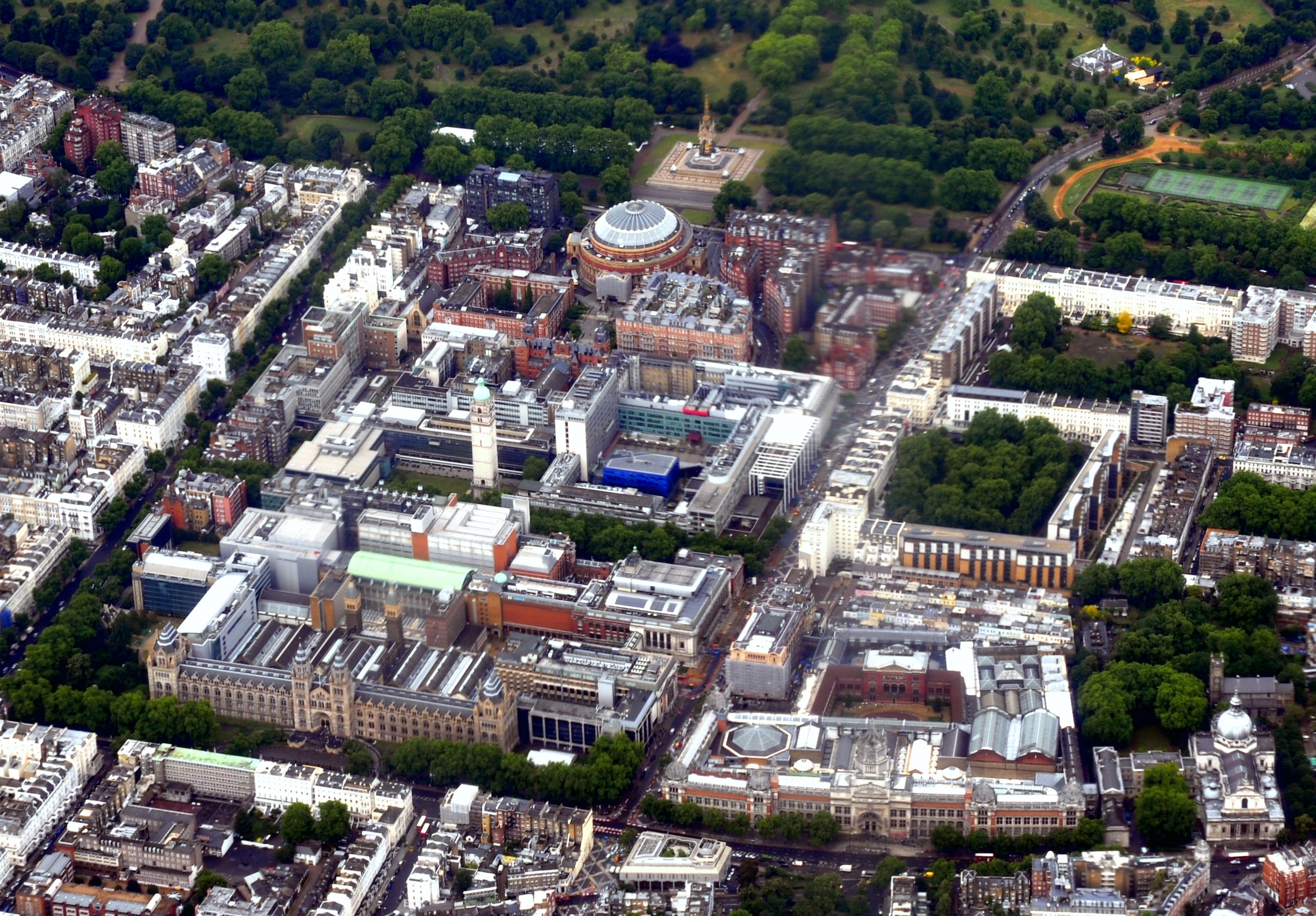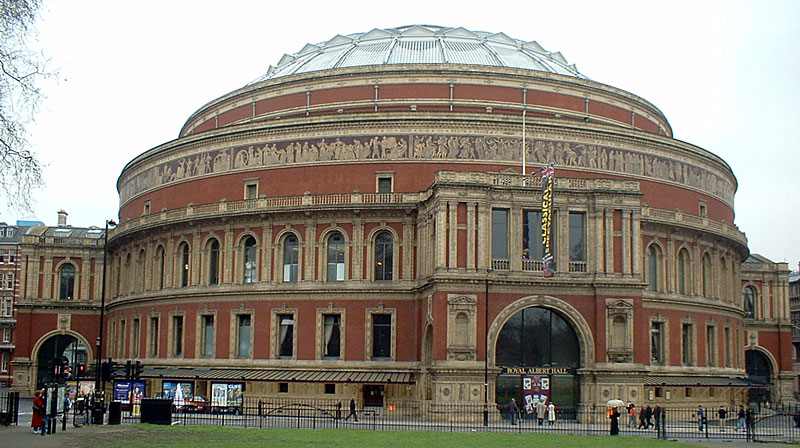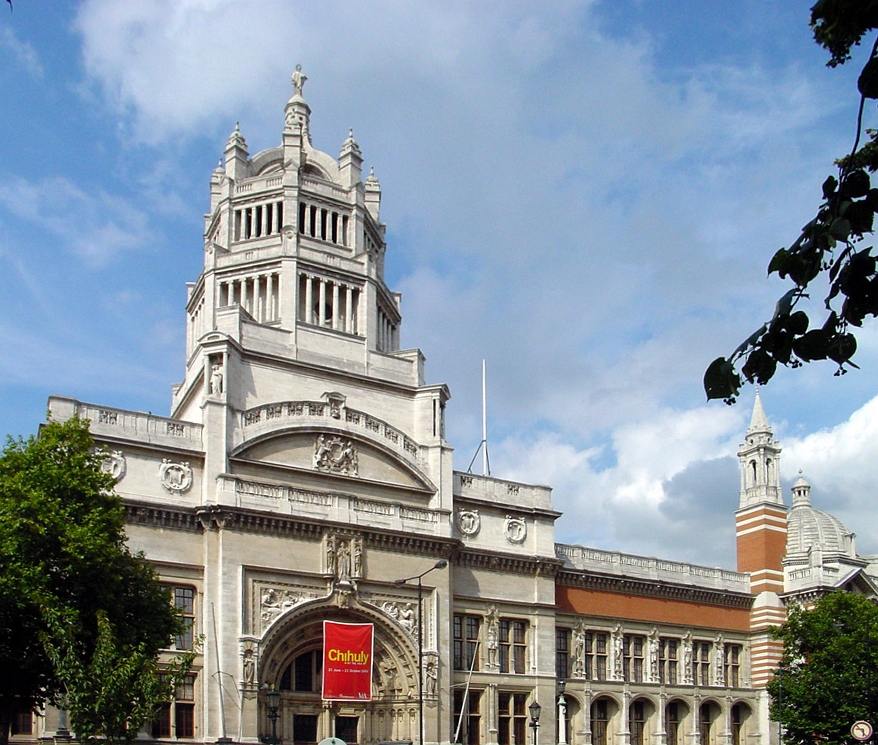Albertopolis on:
[Wikipedia]
[Google]
[Amazon]
 Albertopolis is the nickname given to the area centred on
Albertopolis is the nickname given to the area centred on



 Institutions in and around Albertopolis include:
*
Institutions in and around Albertopolis include:
*
Albertopolis online exhibition
from the Royal Institute of British Architects
from the Victoria and Albert Museum
Royal Commission for the Exhibition of 1851Survey of London: volume 38: South Kensington Museums Area
F. H. W. Sheppard (editor). Originally published by the Athlone Press for the Greater London Council, 1975. Available online as part o
British History Online
Walking tour of Albertopolis
Podcast, PDF and map. {{Imperial College London Areas of London Museum districts in the United Kingdom Great Exhibition Tourist attractions in the Royal Borough of Kensington and Chelsea Tourist attractions in the City of Westminster South Kensington
 Albertopolis is the nickname given to the area centred on
Albertopolis is the nickname given to the area centred on Exhibition Road
Exhibition Road is a street in South Kensington, London which is home to several major museums and academic establishments, including the Victoria and Albert Museum, the Science Museum and the Natural History Museum.
Overview
The road g ...
in London
London is the capital and List of urban areas in the United Kingdom, largest city of England and the United Kingdom, with a population of just under 9 million. It stands on the River Thames in south-east England at the head of a estuary dow ...
, named after Prince Albert, consort of Queen Victoria
Victoria (Alexandrina Victoria; 24 May 1819 – 22 January 1901) was Queen of the United Kingdom of Great Britain and Ireland from 20 June 1837 until her death in 1901. Her reign of 63 years and 216 days was longer than that of any previ ...
. It contains many educational and cultural sites. It is in South Kensington
South Kensington, nicknamed Little Paris, is a district just west of Central London in the Royal Borough of Kensington and Chelsea. Historically it settled on part of the scattered Middlesex village of Brompton. Its name was supplanted with ...
, split between the Royal Borough of Kensington and Chelsea
The Royal Borough of Kensington and Chelsea is an Inner London borough with royal status. It is the smallest borough in London and the second smallest district in England; it is one of the most densely populated administrative regions in the ...
and the City of Westminster
The City of Westminster is a city and borough in Inner London. It is the site of the United Kingdom's Houses of Parliament and much of the British government. It occupies a large area of central Greater London, including most of the West En ...
(the border running along Imperial College Road
Imperial College Road is a tree-lined road in South Kensington, London, England. It runs east–west with Queen's Gate to the west and Exhibition Road to the east.
The road forms part of the boundary between Royal Borough of Kensington and Ch ...
), and the area bordered by Cromwell Road
Cromwell Road is a major London road in the Royal Borough of Kensington and Chelsea, designated as part of the A4. It was created in the 19th century and is said to be named after Richard Cromwell, son of Oliver Cromwell, who once owned a hous ...
to the south and Kensington Road
Kensington Road is a section of road in the Royal Borough of Kensington and Chelsea and the City of Westminster, London, forming part of the A315 road. It runs along the south edge of Kensington Gardens and Hyde Park. To the west it becomes ...
to the north.
Institutions



 Institutions in and around Albertopolis include:
*
Institutions in and around Albertopolis include:
*Imperial College London
Imperial College London (legally Imperial College of Science, Technology and Medicine) is a public research university in London, United Kingdom. Its history began with Prince Albert, consort of Queen Victoria, who developed his vision for a cu ...
*Natural History Museum
A natural history museum or museum of natural history is a scientific institution with natural history collections that include current and historical records of animals, plants, fungi, ecosystems, geology, paleontology, climatology, and more. ...
*Royal Albert Hall
The Royal Albert Hall is a concert hall on the northern edge of South Kensington, London. One of the UK's most treasured and distinctive buildings, it is held in trust for the nation and managed by a registered charity which receives no govern ...
*Royal College of Art
The Royal College of Art (RCA) is a public research university in London, United Kingdom, with campuses in South Kensington, Battersea and White City. It is the only entirely postgraduate art and design university in the United Kingdom. It ...
*Royal College of Music
The Royal College of Music is a conservatoire established by royal charter in 1882, located in South Kensington, London, UK. It offers training from the undergraduate to the doctoral level in all aspects of Western Music including perform ...
*Royal Geographical Society
The Royal Geographical Society (with the Institute of British Geographers), often shortened to RGS, is a learned society and professional body for geography based in the United Kingdom. Founded in 1830 for the advancement of geographical scien ...
*Royal Institute of Navigation
The Royal Institute of Navigation (RIN) is a learned society and a professional body for navigation. The RIN was founded in 1947 as a forum for mariners, pilots, engineers and academics to compare their experiences and exchange information. Toda ...
*Science Museum
A science museum is a museum devoted primarily to science. Older science museums tended to concentrate on static displays of objects related to natural history, paleontology, geology, industry and industrial machinery, etc. Modern trends in ...
*Victoria and Albert Museum
The Victoria and Albert Museum (often abbreviated as the V&A) in London is the world's largest museum of applied arts, decorative arts and design, housing a permanent collection of over 2.27 million objects. It was founded in 1852 and nam ...
*Albert Memorial
The Albert Memorial, directly north of the Royal Albert Hall in Kensington Gardens, London, was commissioned by Queen Victoria in memory of her beloved husband Prince Albert, who died in 1861. Designed by Sir George Gilbert Scott in the Gothic R ...
The following were originally institutions in their own right:
*City & Guilds College, now Imperial College's Faculty of Engineering
*Geological Museum
The Geological Museum (originally the Museum of Economic Geology then the Museum of Practical Geology), started in 1835 as one of the oldest single science museums in the world and now part of the Natural History Museum in London. It transfe ...
, now a subsidiary of the Natural History Museum
*Royal College of Science
The Royal College of Science was a higher education institution located in South Kensington; it was a constituent college of Imperial College London from 1907 until it was wholly absorbed by Imperial in 2002. Still to this day, graduates from th ...
, now Imperial College's Faculty of Natural Sciences
*Royal School of Mines
The Royal School of Mines comprises the departments of Earth Science and Engineering, and Materials at Imperial College London. The Centre for Advanced Structural Ceramics and parts of the London Centre for Nanotechnology and Department of Bi ...
, now a part of Imperial College's Faculty of Engineering
Institutions formerly in Albertopolis include:
*Royal College of Organists
The Royal College of Organists (RCO) is a charity and membership organisation based in the United Kingdom, with members worldwide. Its role is to promote and advance organ playing and choral music, and it offers music education, training and de ...
, from 1904 to 1991.
*Royal School of Naval Architecture
The first School of Naval Architecture opened in 1811 in Portsmouth. The school was principally established to offer a deeper study of the principles of ship design than had traditionally been retained through the apprenticeship model. To this ...
, from 1864 to 1873.
*Royal School of Needlework
The Royal School of Needlework (RSN) is a hand embroidery school in the United Kingdom, founded in 1872 and based at Hampton Court Palace since 1987.
History
The RSN began as the School of Art Needlework in 1872, founded by Lady Victoria Welb ...
, from 1903 to 1987.
*Imperial Institute
The Commonwealth Education Trust is a registered charity established in 2007 as the successor trust to the Commonwealth Institute. The trust focuses on primary and secondary education and the training of teachers and invests on educational pro ...
, later Commonwealth Institute
The Commonwealth Education Trust is a registered charity established in 2007 as the successor trust to the Commonwealth Institute. The trust focuses on primary and secondary education and the training of teachers and invests on educational pro ...
, from 1893 to 1962.
More recent additions to Albertopolis include:
*Polish Hearth Club
The Polish Hearth Club (Polish: ''Ognisko Polskie'') is a private members' club founded soon after the outbreak of World War II by the British Government and the Polish government-in-exile at 55 Princes Gate, Exhibition Road in the City of West ...
from 1939
* Polish Institute and Sikorski Museum from 1945
*Ismaili Centre
The Ismaili Centres are symbolic markers of the permanent presence of the Nizari Ismailis in the countries and regions in which they are established, characterised by the Aga Khan IV as 'ambassadorial buildings'. Each building is architecturally un ...
History
Following the advice of Prince Albert the area was purchased by theRoyal Commission for the Exhibition of 1851
The Royal Commission for the Exhibition of 1851 is an institution founded in 1850 to administer the international exhibition of 1851, officially called the Great Exhibition of the Works of Industry of all Nations. The Great Exhibition was held ...
with the profits made from the Great Exhibition
The Great Exhibition of the Works of Industry of All Nations, also known as the Great Exhibition or the Crystal Palace Exhibition (in reference to the temporary structure in which it was held), was an international exhibition which took pl ...
of 1851, which was held in a site in Hyde Park nearby to the north-east. This is commemorated in the name of the principal north–south street laid out on their estate, Exhibition Road.
Prince Albert was a driving force behind the Great Exhibition and President of the Royal Commission, and the name "Albertopolis" seems to have been coined in the 1850s to celebrate and somewhat satirise his role in Victorian cultural life. After his death the term fell into disuse, and the area was more widely referred to as South Kensington
South Kensington, nicknamed Little Paris, is a district just west of Central London in the Royal Borough of Kensington and Chelsea. Historically it settled on part of the scattered Middlesex village of Brompton. Its name was supplanted with ...
. It was revived by architectural historians in the 1960s and popularised by the nascent conservation
Conservation is the preservation or efficient use of resources, or the conservation of various quantities under physical laws.
Conservation may also refer to:
Environment and natural resources
* Nature conservation, the protection and manageme ...
movement to bring attention to the complex of public Victorian buildings and the surrounding houses built on the Commissioners' estate, that were threatened with demolition by the expansion and redevelopment plans of Imperial College. Among the buildings threatened was the Imperial Institute
The Commonwealth Education Trust is a registered charity established in 2007 as the successor trust to the Commonwealth Institute. The trust focuses on primary and secondary education and the training of teachers and invests on educational pro ...
, designed by T. E. Collcutt.
Overview
There is a central axis between theAlbert Memorial
The Albert Memorial, directly north of the Royal Albert Hall in Kensington Gardens, London, was commissioned by Queen Victoria in memory of her beloved husband Prince Albert, who died in 1861. Designed by Sir George Gilbert Scott in the Gothic R ...
in Kensington Gardens
Kensington Gardens, once the private gardens of Kensington Palace, are among the Royal Parks of London. The gardens are shared by the City of Westminster and the Royal Borough of Kensington and Chelsea and sit immediately to the west of Hyd ...
to the north and the central portal of the south façade of the Natural History Museum. The Royal Albert Hall, Royal College of Music, the former tower of the otherwise-demolished Imperial Institute (now the Queen's Tower of Imperial College London) and the 1950s rear extension to the Science Museum are all aligned on this axis, which cannot be seen on the ground. This regular geometric alignment of Albertopolis can be observed readily only from the balconies of the Queen's Tower (very rarely open to visitors), although the northern part can be glimpsed from the top floor of the Science Museum.
The closest tube station is South Kensington
South Kensington, nicknamed Little Paris, is a district just west of Central London in the Royal Borough of Kensington and Chelsea. Historically it settled on part of the scattered Middlesex village of Brompton. Its name was supplanted with ...
, linked to the museums by the South Kensington Subway, a tiled tunnel beneath Exhibition Road constructed in 1885. The subway was originally intended to go as far as the Royal Albert Hall, but the construction of the Imperial Institute meant the tunnel emerged at the Science Museum where it exits onto Exhibition Road. Originally only opened during exhibitions in South Kensington, it was opened to the public free of charge in 1908. The subway is Grade II listed.
There are also two research libraries in the area, the Dana Centre
The Dana Library and Research Centre (formerly the Dana Centre) on Queen's Gate, South Kensington, London is part of the Science Museum Group.
Designed by Sir Richard MacCormac of MJP Architects, the building opened in 2003 as a public event v ...
, part of the Science Museum, and Imperial College's Central Library, located on Queen's Lawn
The Queen's Lawn is a green lawned area situated at the centre of Imperial College London's South Kensington campus, next to the Queen's Tower and immediately to the north of Imperial College Road. It provides an open space of 1,600 sq metre ...
.
See also
*Charles Wentworth Dilke
Charles Wentworth Dilke (1789–1864) was an English liberal critic and writer on literature.
Professional life
He served for many years in the Navy Pay-Office, on retiring from which in 1830 he devoted himself to literary pursuits.
Lit ...
* Exhibition Road
Exhibition Road is a street in South Kensington, London which is home to several major museums and academic establishments, including the Victoria and Albert Museum, the Science Museum and the Natural History Museum.
Overview
The road g ...
* Henry Cole
Sir Henry Cole FRSA (15 July 1808 – 18 April 1882) was a British civil servant and inventor who facilitated many innovations in commerce and education in the 19th century in the United Kingdom. Cole is credited with devising the concept of ...
* Museum Lane
Museum Lane runs between two of London's leading museums in South Kensington, namely the Science Museum to the north and the Natural History Museum (formerly the Geological Museum) to the south. It runs to the west off Exhibition Road through ...
* Serpentine Gallery
The Serpentine Galleries are two contemporary art galleries in Kensington Gardens, Hyde Park, Central London. Recently rebranded to just Serpentine, the organisation is split across Serpentine South, previously known as the Serpentine Gallery ...
in Hyde Park to the north
References
External links
Albertopolis online exhibition
from the Royal Institute of British Architects
from the Victoria and Albert Museum
Royal Commission for the Exhibition of 1851
F. H. W. Sheppard (editor). Originally published by the Athlone Press for the Greater London Council, 1975. Available online as part o
British History Online
Walking tour of Albertopolis
Podcast, PDF and map. {{Imperial College London Areas of London Museum districts in the United Kingdom Great Exhibition Tourist attractions in the Royal Borough of Kensington and Chelsea Tourist attractions in the City of Westminster South Kensington